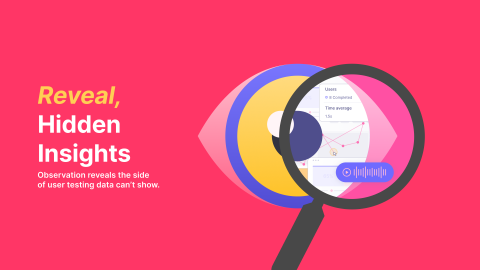I am a designer. Since you are reading this post, chances are you are one too. So far so good. But, honestly, what exactly are we? Isn’t a title like “designer” kind of vague to describe what we do?
You might answer “Yes, that’s the reason we’ve put cool pointing words before the “designer word” like UX, UI, product, visual, interaction” and the list goes on; to describe what we do.
Call me nuts, but I believe that if we don’t erase the “designer” title soon, we will certainly have issues in the near future when we will need to build a new framework for the UX industry’s job roles. As a matter of fact, we already have.
Anyway, this post’s scope is to provide you with information regarding the current state of the UX industry.
Disclaimer: All the data presented below was retrieved by secondary research (latest studies, papers, and popular blogs) for the sake of giving our readers a feeling of how the UX industry is being transformed.
UX is finally popular. As we speak, there are 1,346,453 professionals on LinkedIn (379,371 live in the United States) claiming to have a direct relation to UX. In this number, you should also consider freelancers, students, and people looking for a job. The most prominent roles on LinkedIn are “UX designer” and “product designer”.
Speaking of jobs, there are 160,980 open UX jobs on LinkedIn alone, with almost ⅓ of them being in the United States (64,624). As expected, California is the state that demands the most UX roles. In Europe, the United Kingdom seems to be the country with the most UX job roles (17,000) with Germany following with 9,500. There appears to be a continuous demand for UX roles which also pushes the salaries up.
Salary expectations
As a matter of fact, the current salaries are considered among the highest with the average pay for a typical UX designer being around $50,000 in the UK and $85,000 in the US.
United kingdom
Associate User Experience Designer
Average/year: $35,747
Highest/year $47,000
Lowest/year: $30,000
Interaction designer
Average/year: $49100
Highest/year: $70147
Lowest/year: $36986
User experience architect
Average/year: $50851
Highest/year $70147
Lowest/year: $38262
User experience designer
Average/year: $50807
Highest/year $71422
Lowest/year: $35711
User experience researcher
Average/year: $51642
Highest/year $84177
Lowest/year: $34436
User experience research manager
Average/year: $74038
Highest/year $96931
Lowest/year: $51016
Senior User experience researcher
Average/year: $75848
Highest/year $109685
Lowest/year: $57393
User experience director
Average/year: $125561
Highest/year $198963
Lowest/year: $95655
United States
Associate User Experience Designer
Average/year: $77,384
Highest/year $117,000
Lowest/year: $53,000
Interaction designer
Average/year: $76,000
Highest/year: $101,000
Lowest/year: $47,000
User experience architect
Average/year: $73,821
Highest/year $106,000
Lowest/year: $45,000
User experience designer
Average/year: $85,277
Highest/year $128,000
Lowest/year: $59,000
User experience researcher
Average/year: $94,765
Highest/year $127,000
Lowest/year: $68,000
User experience research manager
Average/year: $64,252
Highest/year $87,000
Lowest/year: $41,000
Senior User experience researcher
Average/year: $113,383
Highest/year $149,000
Lowest/year: $83,000
User experience director
Average/year: $152,898
Highest/year $201,000
Lowest/year: $111,000
UX designer
Australia – $57,691
Japan – $53,000
France – $47,152
Germany – $33,058
Education
Okay, the salaries are good. How does someone become a UX pro though? Actually, it has never been easier. All you gotta do is start learning and getting experience. According to research, 50% of the UX workforce appears to be self-taught (including those that UX wasn’t their primary subject in college/uni). In the future, we might see a shift toward online programs and of course an increase in interest by academia.
Skills on demand
Since UX has become more sophisticated, the basic skills of a UX designer have become far more. While you will still need some design education, editing, UX writing, wireframing, and of course an understanding of coding (HTML, CSS, Javascript, React), job roles are now also looking for previous experience in user research (previously a job role by itself) and usability testing. There is also an increase in demand for soft skills, something that was not considered important in the past.
What the Future beholds for UX
6 quick predictions/estimations:
- Usability is going to be the next “designer word” -read the 2nd paragraph again
- More remote jobs
- Increase in inhouse UX job roles
- Increase in outsourcing UX work to 3rd parties
- UX will go beyond the internet as it is today
- Ux will enter previously unimagined fields
Feel free to contact us!
We’d love to know your experience with Useberry and we will be excited to hear your thoughts and ideas.




